“The World’s Fastest CT90? Maybe…”
Introduced in 1966, the Honda CT90 was a single-cylinder four-stroke step-through motorcycle also marketed as the Trail 90. It may seem strange in our day of purpose-built dirt bikes and utility four-wheelers, but Honda actually marketed the bike to hunters, farmers, outdoorsmen, and commuters, highlighting its off-road utility.
In fact, in a recent retrospective, Ultimate Motorcycling called it “The First True Adventure Bike,” interviewing an 80-year-old native of Michigan’s rugged Upper Peninsula who still uses his ’68 CT90 to roam his local logging roads and trails in search of small game.
While production ended in 1979, the CT90 had become a mainstay Down Under:
“Honda killed off the Cub-derived CT models in many markets as customers moved towards faster machines, but the CT soldiered on in Australia as the beloved ‘postie bike’ for decades, serving as a mail carrier’s mount. These bikes were also popular in some African countries, as they offered sensible all-terrain capability for under-developed road networks.” –Ride Apart
With just 7 hp available from the 89cc aluminum head OHC engine, the CT was no speedster, boasting a top speed of just 55 mph. However, our friend Matt Sheppard of Adelaide, South Australia’s SXK Motorcycles (Sheppard x Kennedy Moto) — builders of the ’48 BSA salt racer we previously featured — decided to transform one of these beloved old postal bikes into a land speed racer:
“This project was about all about a Postie going fast so was given the nickname the ‘Express Postie.'”
It’s actually a 1974 CT90 engine in an ’82 CT110 frame, highly modified to compete in the 100-MPS-CG class, meaning up to 100cc, partially streamlined, classic, running on regular gasoline. Matt gives us the full details on the modifications below, but suffice to say that turning an old mail carrier mount into a salt racer was no easy feat — especially one that could accommodate Matt’s six-foot frame:
“The challenge with the CT90 as a land speed bike is the fact that they were never supposed to go fast. Everything about them is designed for low-speed stop-start riding to deliver the mail. The CT90 even has a dual range gearbox to make it suited for even lower than normal speed riding.”

Then there are the challenges that arise only on the salt itself, running at WOT for three miles on end. However, Matt and his crew of Salt Monkey dry lake racers persevered to set a new Australian class record of 62.81 mph, with a best recorded of speed of 66 mph — a 20% increase from factory! Says Matt:
“The goal is 70 MPH plus next year! As a fun side note, I can’t find any info on a Honda CT90 with the standard engine going any faster — is this the world’s fastest CT90? Maybe…”
Below, Matt gives us the full story on the concept, the build, and racing during Australia’s Speed Week at Lake Gairdner — aka “the big white dyno.”
Honda CT90 Land Speeder: Builder / Racer Interview
My name is Matt, I’m a 33 year old motorcycle mechanic from South Australia. I grew up adjacent to motorcycles but wasn’t bitten by the bug until my late teens. My uncle has always been a bike enthusiast and a staunch Kawasaki fan; my early memories of visiting him include his Z9 parked proudly in the living room.
I also rode his 1970s KE175’s when visiting but I didn’t own my first bike until I was 19, the no-nonsense Honda CRF450. The CRF launched me on a steep learning curve. Compared to the KE175, the Honda was a significant step up in power and weight also a lot of my early riding was in sand. Needless to say I fell off a lot!
The next couple years saw me off-road and enduro riding until a career change through work experience in a motorcycle dealer exposed me to a whole new world of bike. This led to an apprenticeship as a motorcycle tech, which got me acquainted with road bikes. It wasn’t long before I owned a Kawasaki ZX6R and spent all my free time riding through the amazing Adelaide hills.
In 2015 I opened my own workshop as a motorbike mechanic, where I began taking projects restoring and modifying older bikes. My skills learned as a panel beater in my first apprenticeship have helped with the fabrication work. This shifted my interest from just modern bikes to appreciating the classics.
This bike is a personal classic project is something I’d talked about building for many years with a good mate of mine for Australia’s Land Speed Race at Lake Gairdner.
It is a 1974 Honda CT90 engine in a 1982 CT110 frame. In Australia the classic Honda CT90’s and Ct110’s are commonly known as “Postie bikes,” as they were used by our postal service for the best part of 50 years. This project was about all about a Postie going fast so was given the nickname the “Express Postie.”
The challenge with the CT90 as a land speed bike is the fact that they were never supposed to go fast. Everything about them is designed for low-speed stop-start riding to deliver the mail. The CT90 even has a dual range gearbox to make it suited for even lower than normal speed riding.
In land speed racing, motorcycles are primarily separated by engine capacity. They are also classed using age of engine and fuel type. The CT90 (89cc) fit in the up to 100cc class, and due to the age of the engine it fit into the classic category. It was run on normal gasoline.
Our first modification was to find a piston that would take the engine to as close to the 100cc limit as possible. After a bit of research I found a piston from a CB175 twin, which gave me the correct bore size, gudgeon pin size, and the bonus of a much higher dome to raise the compression.
The combination worked but the combustion chamber had to be slightly reshaped and the piston lightly machined to stop the two from making contact. I also welded on some extensions to the cooling fins on the barrel to help with heat dissipation.
The head ports were opened up a bit to match the new intake manifold and exhaust, and a Yoshimura 28mm downdraft carburettor was fitted to feed the little beast.
Much to my surprise I also managed to find a performance camshaft. Trust me when I say, there are very few results when you search for Honda CT90 performance parts!
I chose to run it in the Modified Partial streamlined (MPS) frame class, which meant the bike could be fitted with a front fairing but not aerodynamic aids on the rear.
The frame was raked and rear shocks were swapped for some solid struts. This lowered the bike while slightly lengthening the wheelbase but within the 10% allowed. The solid rear struts also allowed the rear tyre to be tucked up inside the long rear fender for less wind drag.
The fairing used was designed for a Yamaha RD350, which the shop bought a while ago hoping to make it work for another project. I sat it over the frame as a bit of a laugh and quickly noticed it fit very well.
To minimise wind drag I wanted the bike frame to be kept as narrow as possible and keep my body inside the lines of the fairing. The standard CT90 tank is quite wide with the seat sat on top. This would have my knees in the breeze, so a new slim tank was made from some stainless steel and a very small and not so luxurious seat sat behind it.
I also made some new handlebar mounts that brought the bars from above the top triple clamp to in front of the forks. This along with the foot pegs shifted as far back as the rules allowed, helped get my six-foot frame somewhat tucked in. A whole bunch of other small necessities and a coat of paint and the bike came together nicely.
I only started really getting into the build a couple months from speed week, so it was always going to be a little rushed. I finished the bike the day before we left so I hadn’t really had a chance to run it anywhere or spend any time on a dyno, but with our fingers crossed we headed to the salt.

On Monday, our first day of racing, I managed three runs down the salt with a best speed of 59.6 MPH, but the bike experienced some fuel starvation issues. Unfortunately, these are issues that you only find with a wide-open throttle for a mile or two, which is why I hadn’t come across them in the shop.
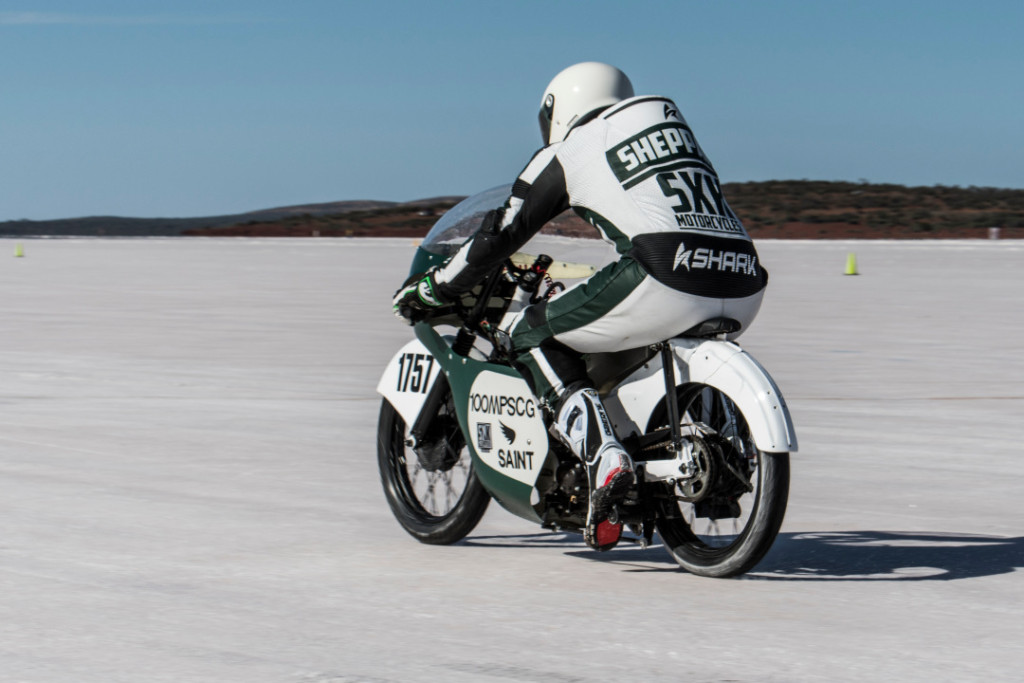
In land speed racing there is a two-mile run up, followed by one mile which is timed. With my fuel starvation problem, I could ride at full noise for most of the run up but by the time I got to the timed section the engine would splutter past 3/4 throttle. As disappointing as it was it gave me confidence the engine had more to give.
To overcome this issue, I lifted the fuel tank slightly, rerouted the fuel lines, and made a makeshift ram air fuel tank pressurization system with a funnel and some tube. Unfortunately, the rain came in and I had to wait two days to test my alterations.
Once the rain had passed and it was my turn to ride, I logged a speed of 59.5 MPH and found the fueling problems were resolved through the pit modifications.
I did, however, find that my 1970s electrics weren’t enjoying the highly corrosive environment and my ignition system started giving me a misfire that only got worse as the engine got hotter — again the issues would only become prevalent by the time I made it to the timed section of the track. I decided to keep my final ride for Friday to take advantage of cooler conditions and I was rewarded with a timing ticket of 66.06 MPH.
This gave me the average speed from the two runs at 62.81 MPH, which is now the Australian record for class 100 MPS CG. I’m yet to get a power run done on a dyno but it will be interesting to see how much I have improved on the 7HP the factory tells us it had, but with a best recorded speed of 66mph I managed to up the top speed of the bike from factory by 20%.
For next year’s race I’m looking at replacing the ignition system with one from this decade, fitting a smaller rear sprocket, and improving the bike’s ergonomics. The goal is 70 MPH plus next year!
As a fun side note, I can’t find any info on a Honda CT90 with the standard engine going any faster — is this the world’s fastest CT90? Maybe…
Thanks to:
- Shark leathers for doing an awesome deal on some custom race leathers
- Saint.cc for their support with this project and others
- Shed King Adelaide
- All the team and crew of the Salt Monkey dry lake racers.
Follow the Builder / Racer
Facebook: Sheppard Motorcycles
Instagram: @sxk_motorcycles_
Photo credits where noted: Patrick O’Kane of Eye See Images



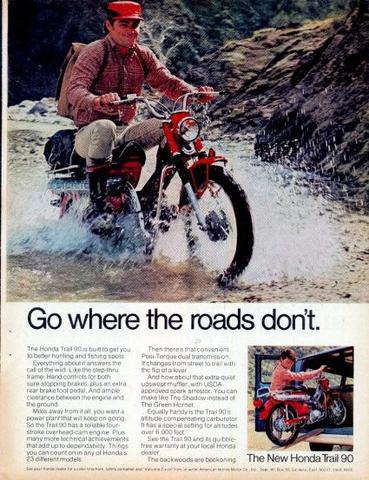





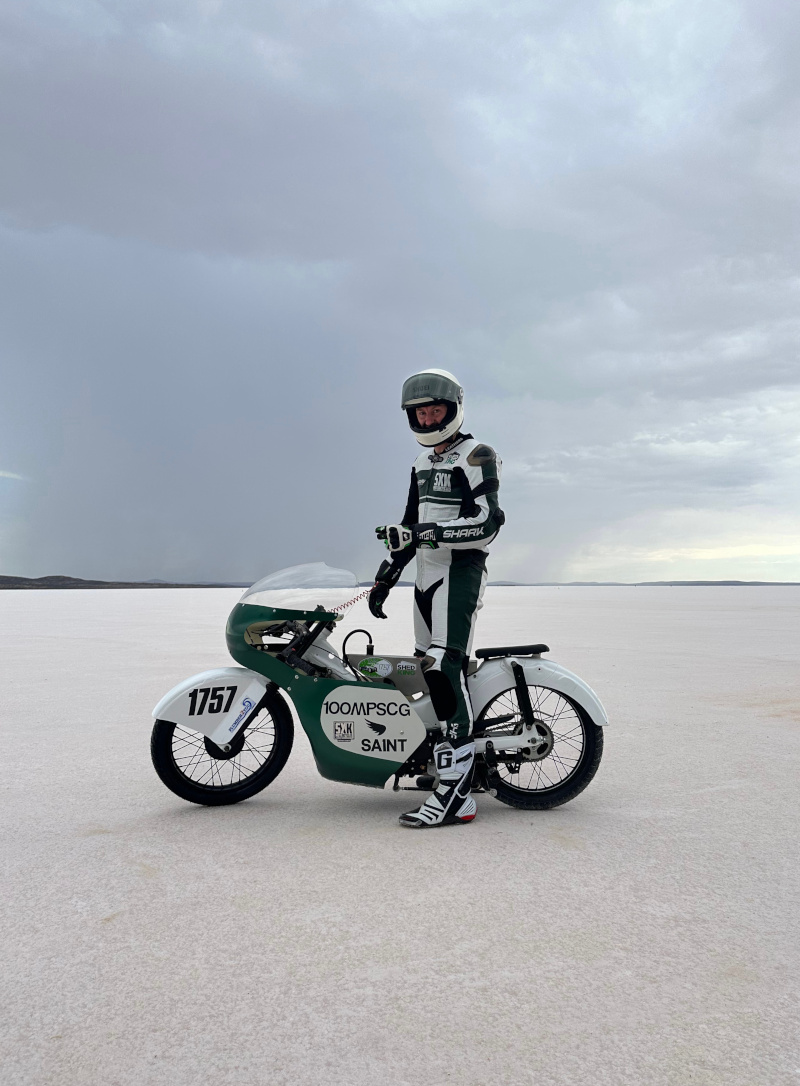
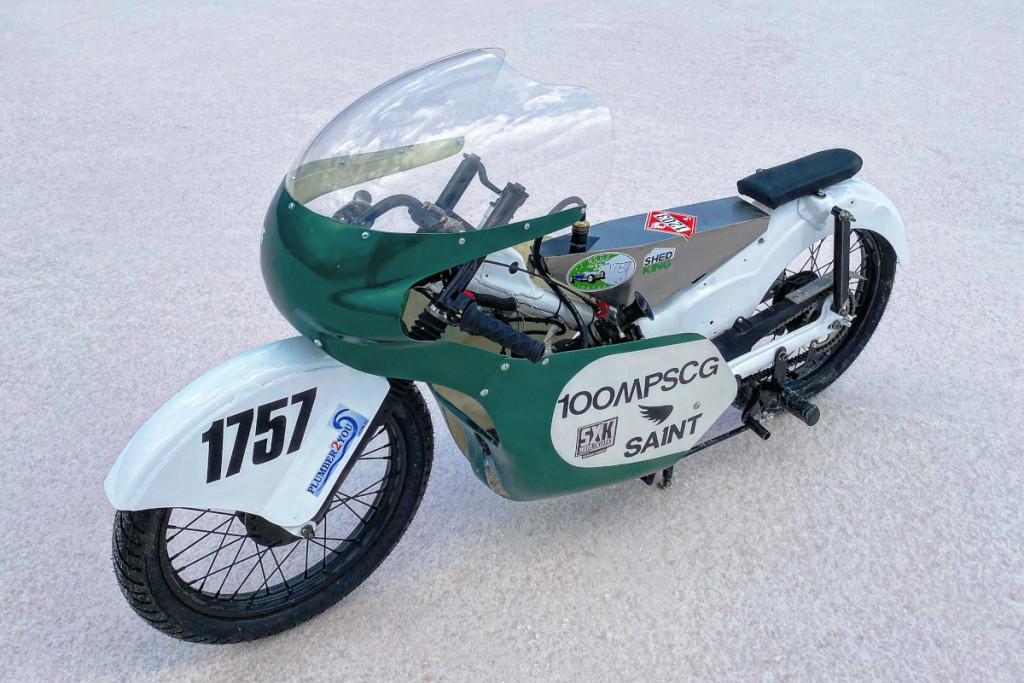
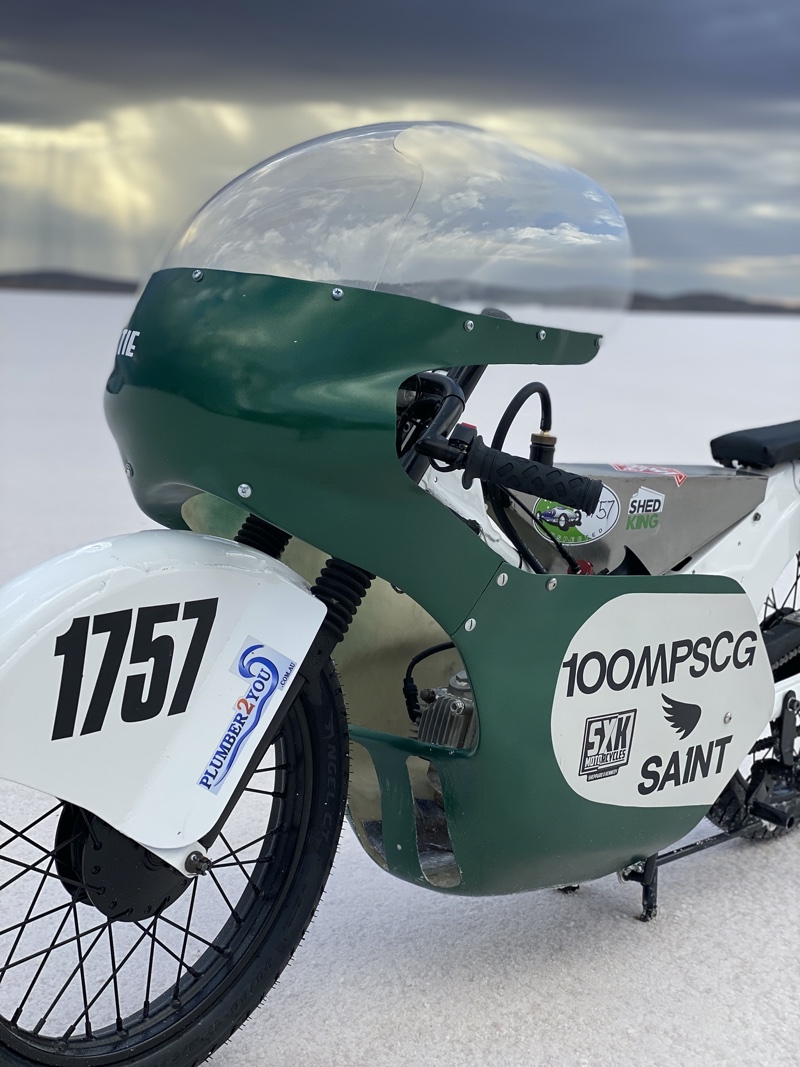

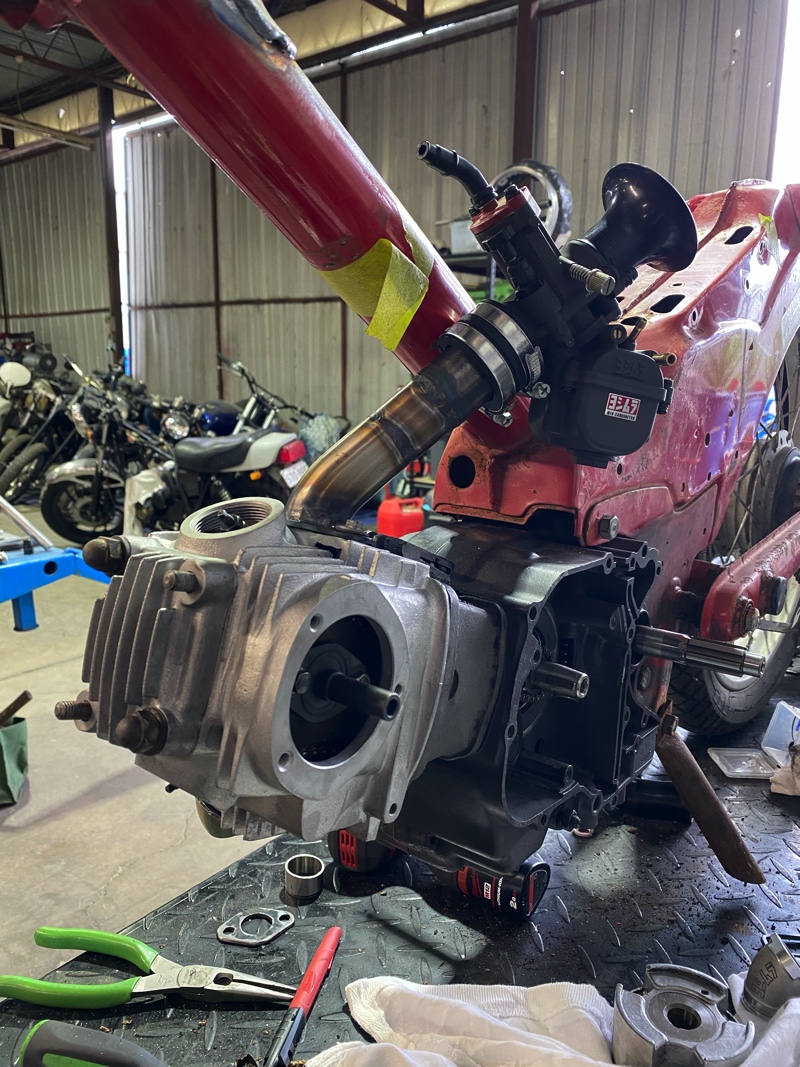
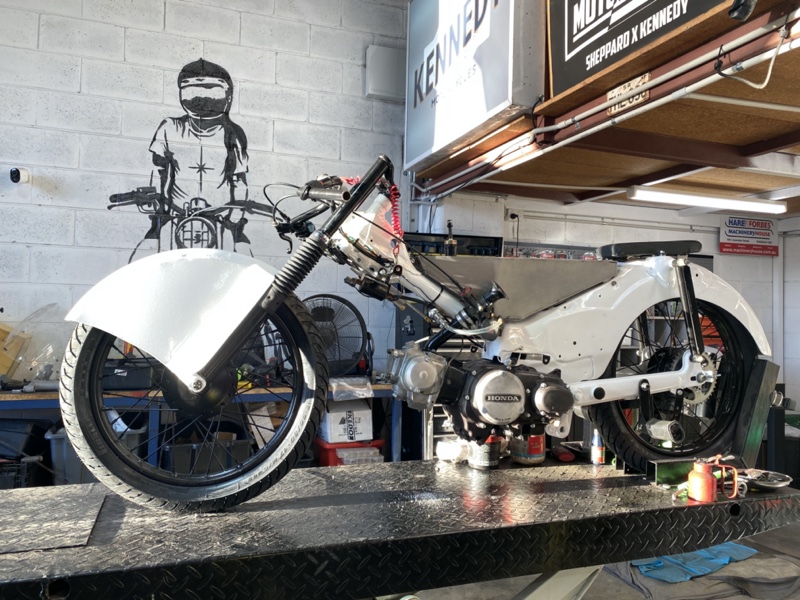

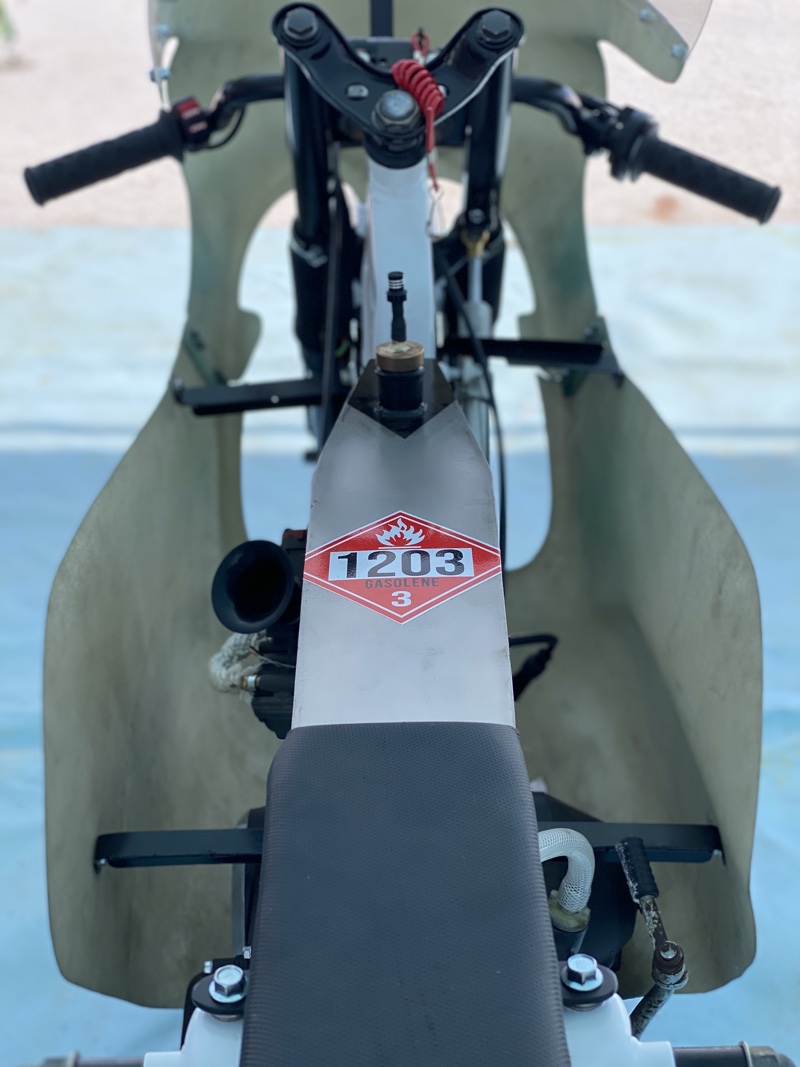
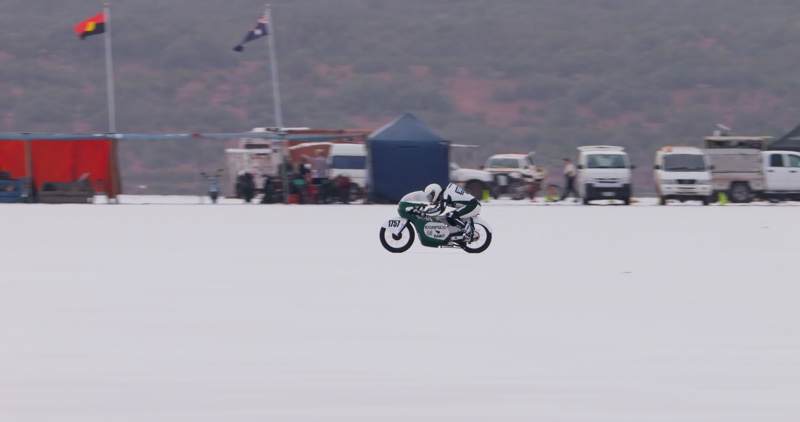
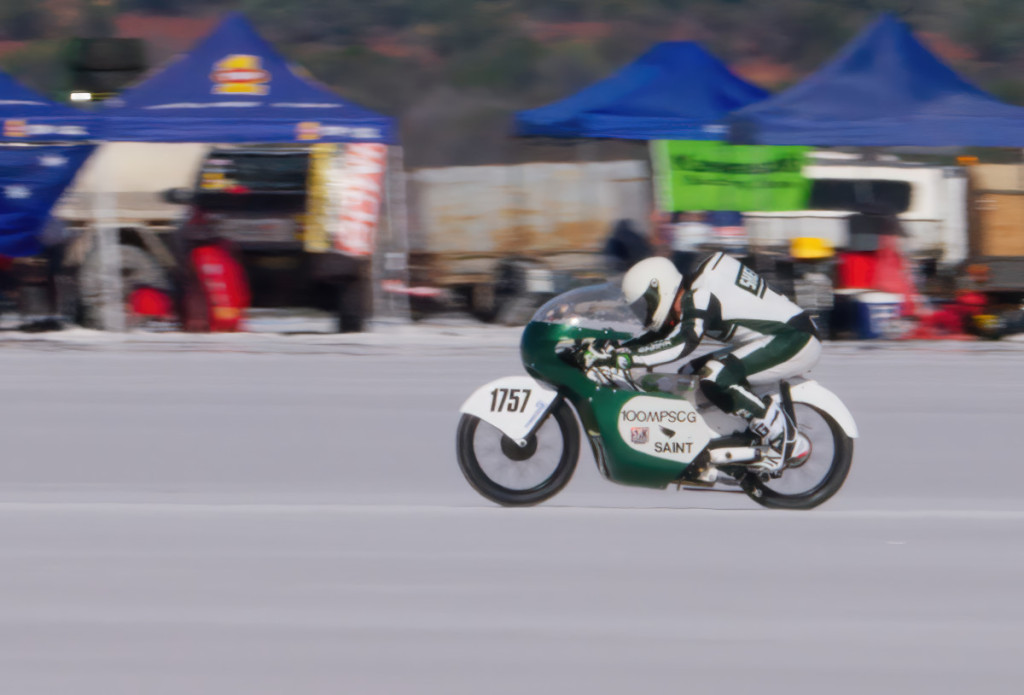







Outstanding! Loved the story.
This brings back memories. S90 with the 175 piston and Webco cam. Used two head gaskets to provide clearance while still having over 200psi compression. You might want to pay attention to the clutch basket as they tended to explode on hard launch. The build was about 50 years ago and I’m sure that 70mph is within range of these engines. Find a rider in the 100-110lb range and your goal will be much more obtainable.